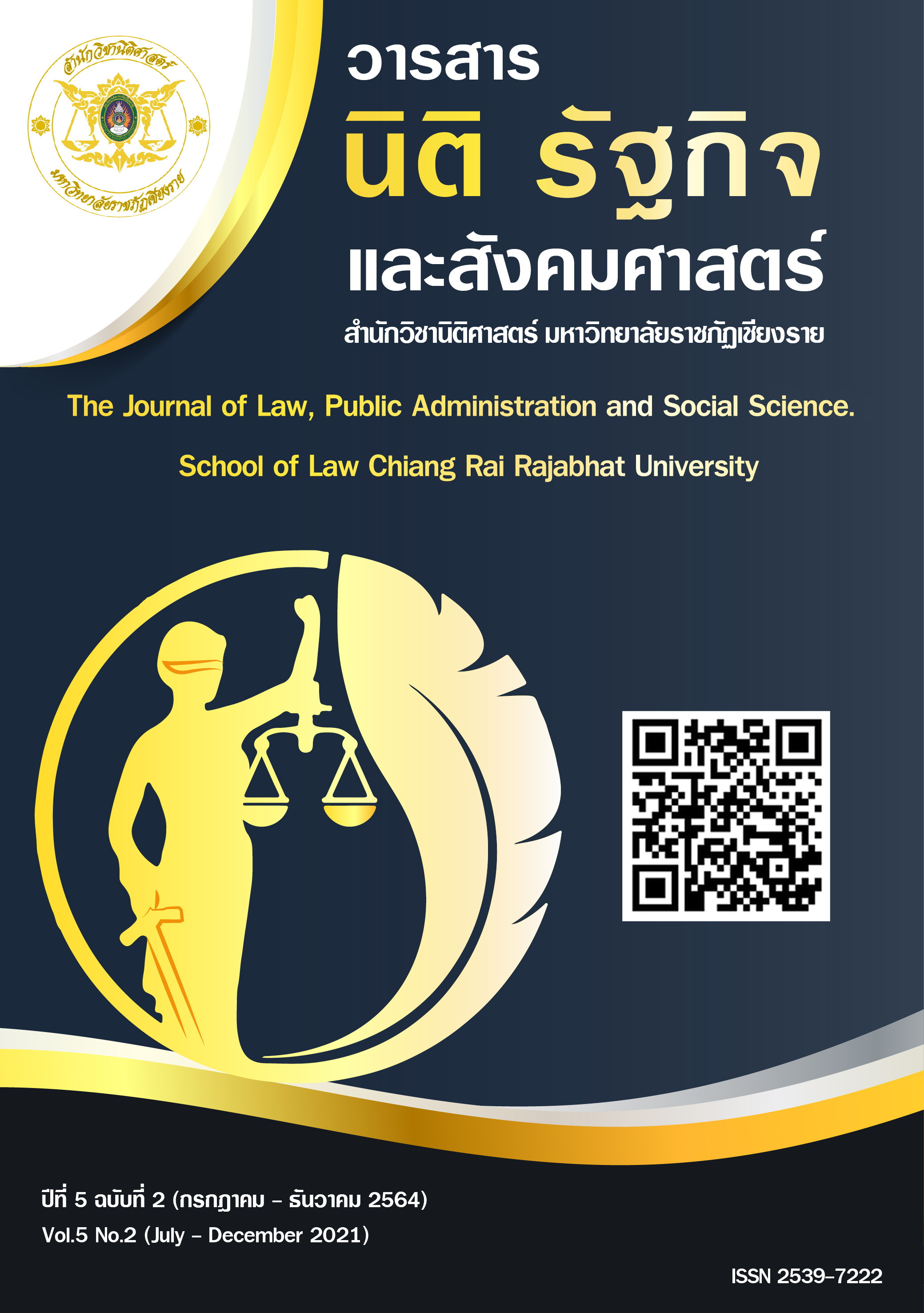แนวทางการจัดการทรัพยากรมนุษย์ที่มีความสามารถพิเศษในมิติการสรรหา การพัฒนา และการธำรงรักษาขององค์การภาคเอกชนและ องค์การภาครัฐวิสาหกิจ
Main Article Content
บทคัดย่อ
การจัดการทรัพยากรมนุษย์ที่มีความสามารถพิเศษ ทั้ง 4 มิติ ได้แก่ มิติที่หนึ่งแนวทางการวางแผน มิติที่สองการสรรหา มิติที่สามการพัฒนา และมิติที่สี่การธำรงรักษาทรัพยากรมนุษย์ที่มีความสามารถพิเศษ นำเสนอข้อเสนอแนะแนวทางการจัดการทรัพยากรมนุษย์ที่มีความสามารถพิเศษในมิติการสรรหา การพัฒนา และการธำรงรักษาขององค์การภาคเอกชนและองค์การภาครัฐวิสาหกิจ มีทั้งหมด 5 ประเด็น ได้แก่ ประเด็นที่หนึ่ง: ที่มาและความสำคัญของปัญหาเกิดจากแนวความคิดที่เกิดกลยุทธ์ที่ใช้การลดการพัฒนาและการฝึกอบรมพนักงาน ประเด็นที่สอง: กรอบแนวคิดเรื่องการจัดการทรัพยากรมนุษย์มี 4 ด้าน คือ 1) ด้านความสำคัญกับบุคลากรในองค์การ 2) ด้านสิทธิในการเลือกหน่วยงาน 3) ด้านการดูแลบุคลากร และ 4) ด้านระบบพี่เลี้ยง ประเด็นที่สาม: การสรรหาทรัพยากรมนุษย์ที่มี 3 ด้าน คือ 1) ด้านการวางตำแหน่งการสรรหา 2) ด้านการสรรหาบุคลากร และ 3) ด้านการตรวจสอบ ประเด็นที่สี่: การพัฒนาทรัพยากรมนุษย์ที่มีความสามารถพิเศษ มี 2 ด้าน คือ 1) รูปแบบการอบรม และ 2) ผู้เข้ารับการฝึกอบรม ประเด็นที่ห้า: การธำรงรักษาทรัพยากรมนุษย์ คือ 1) การดึงดูดและจูงใจบุคลากร และ 2) ระบบเงินเดือนมาตรฐานในระบบการบริหารค่าจ้างขององค์การต่าง ๆ
Article Details
เอกสารอ้างอิง
กัลยารัตน์ ธีระธนชัยกุล. “การบริหารบุคลากรที่มีศักยภาพสูงในองค์การ.” วารสารวิชาการมหาวิทยาลัยอีสเทิร์นเอเชีย ฉบับสังคมศาสตร์และมนุษยศาสตร์ 4, ฉ.3 (2557): 14.
เกื้อ วงศ์บุญสิน. ประชากรศาสตร์ทรัพยากรมนุษย์. กรุงเทพฯ: จุฬาลงกรณ์มหาวิทยาลัย, 2547.
จุฑาทิพย์ สุขสวัสดิ์. “แนวทางการบริหารคนเก่งคนดี ของสถานประกอบการในเขตนิคม อุตสาหกรรมอีสเทิร์นซีบอร์ด จังหวัดระยอง.” วิทยานิพนธ์ปริญญามหาบัณฑิต สาขาวิชาการจัดการทรัพยากรมนุษย์ มหาวิทยาลัยบูรพา, 2555.
ทายาท ศรีปลั่ง. จัดสรรงาน บริหารคน ในยุคโลกเปลี่ยนงานเปลี่ยน. กรุงเทพฯ: ฐานบุ๊คส์, 2552.
ธีระเดช ริ้วมงคล. การจัดการทรัพยากรมนุษย์. พิมพ์ครั้งที่ 4. กรุงเทพฯ: มหาวิทยาลัยรามคำแหง, 2560.
พยัต วุฒิรงค์. การบริหารทรัพยากรมนุษย์ในทศวรรษหน้า. กรุงเทพฯ: จุฬาลงกรณ์มหาวิทยาลัย, 2559.
สุกัญญา รัศมีธรรมโชติ. พัฒนาดาวเด่นเพื่อองค์กรเป็นเลิศด้วย Talent Management by Competency-Based Career Development and Succession Planning. กรุงเทพฯ: สถาบันเพิ่มผลผลิตแห่งชาติ, 2554.
สุธินี ฤกษ์ขำ. การพัฒนาทรัพยากรมนุษย์ : หลักการและการประยุกต์. กรุงเทพฯ: จุฬาลงกรณ์มหาวิทยาลัย, 2557.
สำนักงานสถิติแห่งชาติ. การทำงานและการวางงานของกำลังคนระดับกลางและระดับสูง พ.ศ. 2560. กรุงเทพฯ: สำนักงานสถิติแห่งชาติ, สำนักนายกรัฐมนตรี, 2559.
อาภรณ์ ภู่วิทยพันธุ์. กลยุทธ์การบริหารและพัฒนาพนักงานดาวเด่น. กรุงเทพฯ: เอช อาร์ เซ็นเตอร์, 2550.
อุทัย เลาหวิเชียร. รัฐประสาสนศาสตร์ลักษณะวิชาและมิติต่าง ๆ. พิมพ์ครั้งที่ 6. กรุงเทพฯ: เสมาธรรม, 2543.
เอกสิทธิ์ สนามทอง. การจัดการและพัฒนาทรัพยากรมนุษย์. กรุงเทพฯ: มหาวิทยาลัยรามคำแหง, 2560.
Brent Davies & Barbara J. Davies. Talent Management in Education. Carifornia: SAGE, 2011.
Cappelli, P., Hiring and keeping the best people. Cambridge, MA: Harvard Business School, 2002.
Kermally, S., Developing and managing talent: A blueprint for business survival. London: Thorogood, 2004.
Michaels, E., The war for talent. Cambridge, MA: Harvard Business School, 2001.
Rothwell, W., Effective succession planning: Ensuring leadership continuity and building talent from within. New York: American Management Association, 2010.


